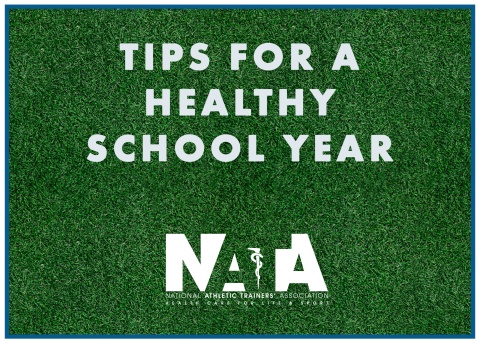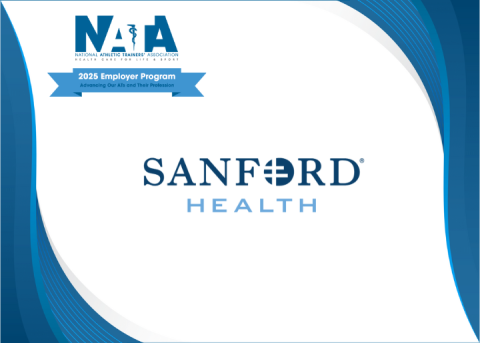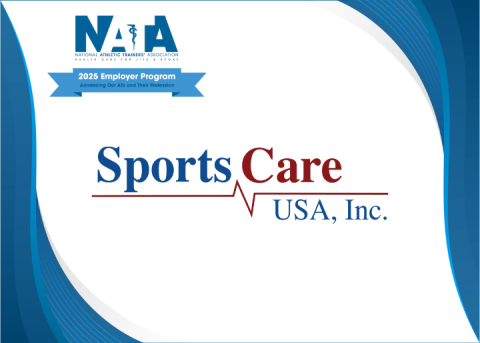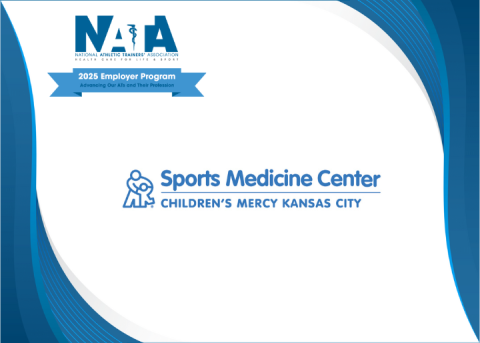
Back-to-school season is right around the corner! As students approach their studies and sports return, athletic trainers also need to get equipped to serve their athletes’ health care needs.
Whether in the secondary school environment or the collegiate setting, ATs have successfully applied themselves to providing complete and compassionate care to student athletes with various health care needs. This year, to continue advancing in their student athlete care, there are some invaluable tips ATs need to consider.
Incoming NATA Secondary School Athletic Trainers’ Committee Chair Ciara Taylor, EdD, LAT, ATC, and NATA Intercollegiate Council for Sports Medicine Chair Brant Berkstresser, MS, LAT, ATC, share the importance of self-advocacy, student athlete health advocacy, emergency action plan review and more as ATs embark on the new season.
Secondary Schools: Health Care Tips for Success
Taylor said, considering challenges, such as increased cost, ATs may need to be more innovative.
“Our sports medicine budget has remained consistent; however, the cost of medical supplies has increased,” she said. “This year will require some creativity and new strategies to address the budget shortfalls.”
Furthermore, Taylor said as ATs in the secondary school setting are often the introduction to the profession, they need to educate “people on who we are, what we do and why we are important.”
Here are her tips for the new school year:
- Take care of yourself first. Use the NATA Position Statement on Facilitating Work-Life Balance in the Athletic Training Practice Settings as a guide.
- Read the recently updated Secondary School Value Model (SSVM).
- Review, update and practice your venue-specific emergency action plans (EAPs). Use the NATA “Time Out” prior to athletic events.
- Analyze pre-participation exams for previous history and medical conditions as specified in the Appropriate Medical Care Standards for Organizations Sponsoring Athletic Activities for the Secondary School Age Athlete.
- Communicate with on-campus personnel, such as school nurses, counselors, resource officers, administrators about student athlete health.
- Collaborate on student athlete health care with a team physician. The NATA Secondary School Athletic Trainers Committee provides Guidelines for Developing a Team Physician Services Agreement in the Secondary School as a resource.
- Take inventory and check medical equipment such as AEDs, splints and cold tubs; purchase medical supplies in bulk via a medical sales representative for deep discounts.
- Review the Secondary School Value Handout: A Safer Approach to Secondary School Sports to prepare for parent and stakeholder meetings.
- Examine the Secondary School Sports Medicine Course Outline to develop or update sports medicine classes.
- Network with local athletic trainers for support, mentorship and fellowship.
For more resources, visit the Secondary School Athletic Trainers Resources page on the NATA website.
Collegiate Setting: Win in the Upcoming Sports Season
Berkstresser said one strength of ATs is their ability to pivot and enhance their delivery of health care as athletics and medicine evolve. This forte reflects in the current priorities in collegiate athletic medical care, which include “a holistic, athlete-centered approach to health care that is encompassing the physical, emotional and mental aspect to care,” he said.
Acknowledging this, Berkstresser provides the following guidelines and suggests ATs visit the College/University Resource webpage for more resources and information:
- Continue to advocate for yourself, staff and department. Use resources made available to you from NATA, including those related to value models, Appropriate Medical Coverage of Intercollegiate Athletics document, published articles on athletic trainer-student athlete ratios, work-life balance and NATA compensation data.
- Assess and rehearse EAPs.
- Review sports medicine policy and procedures.
- Develop and implement additional services, if applicable.
- Review and discuss institution-specific policies, procedures and protocols specific to the health care delivery system (e.g., standing orders, management of illness, vision policy, etc.).
- Review and practice policies for prevention and management of emergency action plans, exertional collapse, non-exertional collapse, sickle cell trait, asthma, spinal cord injury, traumatic head injury, suspected heat illness, suspected anaphylaxis shock, sudden cardiac arrest and diabetic emergency.
- Review policies and procedures related to preparedness and management of inclement weather (heat, cold, lightning and air quality) and include all applicable staff/personnel.
- Prepare, plan and communicate pre-participation physical exams to student athletes.
- Review the Sixth International Consensus Statement on Concussion in Sport, which was just recently published with team physicians to evaluate whether they want to make any changes to their concussion management guidelines and when may be the best time to implement those changes.
- Review annual health and safety education for student athletes, coaches and athletic administration as recommended by NCAA inter-association recommendations, including Preventing Catastrophic Injury and Death in Collegiate Athletics and the newly released NATA Inter-Association Collegiate Standard of Care Toolkit.
- Review and educate athletic administration and coaches about Independent Medical Care Best Practices.
- Continue to advocate for student athlete health and safety and your staff over the course of the next months to year with the addition of new resources available to NATA members, such as the Collegiate Athletic Trainer Labor Crisis resource; the NATA Inter-Association Collegiate Standard of Care Toolkit; other available resources through the ICSM resource page; and NATA publications.





